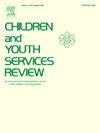评估安置改变对内化和外化症状的影响
IF 1.7
2区 社会学
Q1 FAMILY STUDIES
引用次数: 0
摘要
青少年寄养安置的不稳定会对儿童的健康产生不利影响,包括情绪和行为障碍。安置不稳定在家庭外护理的青少年中很常见,并可能导致行为挑战。行为问题也可能是安置改变的一个原因。这一分析探讨了安置不稳定性与内化和外化行为之间的关系。这种关系的双向性质使得分析位置变化对儿童行为的影响更具挑战性。为了隔离这一点,我们使用了一个涉及儿童福利的青少年的纵向样本,他们还没有经历过基线的安置变化。我们调查了安置变化、创伤经历、社会支持和社区联系如何在三年内使用固定效应来促进内化和外化症状。固定效应模型使我们能够解释受访者之间的时不变差异,并专注于个体内部差异。在这项分析中,我们发现安置的改变与内化和外化症状的平均减少有关,那些创伤得分较高的人比创伤得分较低的同龄人有更多的行为问题。我们还讨论了女孩和男孩在这方面的发展有何不同,以及我们的研究结果的含义。本文章由计算机程序翻译,如有差异,请以英文原文为准。
Estimating the effects of placement changes on internalizing and externalizing symptoms
Placement instability for youth in foster care can adversely affect child well-being, including emotional and behavioral disorders. Placement instability is common among youth in out-of-home care and can lead to behavioral challenges. Behavioral problems can also be a reason for placement change. This analysis explores the relationship between placement instability and internalizing and externalizing behaviors. The bidirectional nature of this relationship makes it more challenging to parse the effects of placement changes on a child’s behavior. To isolate this, we use a longitudinal sample of youth involved in child welfare who have not yet experienced a placement change at baseline. We investigate how placement changes, traumatic experiences, social support, and community connections contribute to internalizing and externalizing symptoms over three years using fixed effects. Fixed effects models allow us to account for time-invariant differences between respondents and focus on within-individual variation. In this analysis, we find that placement changes are associated with an average decrease in internalizing and externalizing symptoms, and those with higher trauma scores have more behavioral problems than their peers with lower trauma scores. We also discuss how this develops differently for girls and boys, along with the implications of our findings.
求助全文
通过发布文献求助,成功后即可免费获取论文全文。
去求助
来源期刊

Children and Youth Services Review
Multiple-
CiteScore
6.30
自引率
6.10%
发文量
303
期刊介绍:
Children and Youth Services Review is an interdisciplinary forum for critical scholarship regarding service programs for children and youth. The journal will publish full-length articles, current research and policy notes, and book reviews.
 求助内容:
求助内容: 应助结果提醒方式:
应助结果提醒方式:


